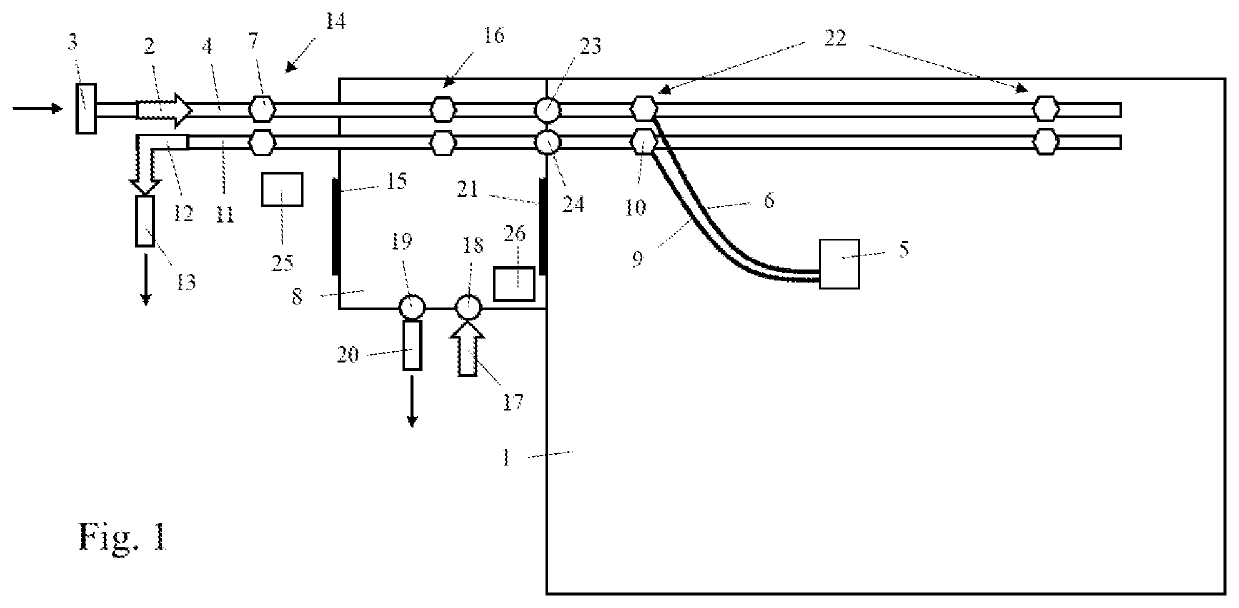Process and apparatus to preclude unfiltered atmospheric gases and human respiration products including carbon-dioxide with carbon-14 from entering controlled greenhouse atmospheric gases
- Summary
- Abstract
- Description
- Claims
- Application Information
AI Technical Summary
Benefits of technology
Problems solved by technology
Method used
Image
Examples
Embodiment Construction
[0018]FIG. 1. is a system diagram for precluding unfiltered atmospheric gases and human respiration products including CO2 with 14C from entering greenhouse 1 atmospheric gases in accordance with the process designs and claims within the invention. An air blower 2 pulls atmospheric gases through an air filter 3 and into the air supply line 4 at a rate between 2.2 and 2.6 cubic feet per minute for each human respirator mask 5. This fresh air supply can be accessed for respiration by connecting a flexible air supply tube 6 to an air supply valve 7 which may be located outside, in the airlock 8, or within 1 at optionally a plurality of locations to support a plurality of either work sites or workers with 5 simultaneously. After human respiration, the exhaled respiration products are vented out of 5 into the flexible air return tube 9, through an air return valve 10, and into the air return line 11. The respiration products are then either pushed out by air pressure created by 2 or vent...
PUM
 Login to View More
Login to View More Abstract
Description
Claims
Application Information
 Login to View More
Login to View More - R&D
- Intellectual Property
- Life Sciences
- Materials
- Tech Scout
- Unparalleled Data Quality
- Higher Quality Content
- 60% Fewer Hallucinations
Browse by: Latest US Patents, China's latest patents, Technical Efficacy Thesaurus, Application Domain, Technology Topic, Popular Technical Reports.
© 2025 PatSnap. All rights reserved.Legal|Privacy policy|Modern Slavery Act Transparency Statement|Sitemap|About US| Contact US: help@patsnap.com

